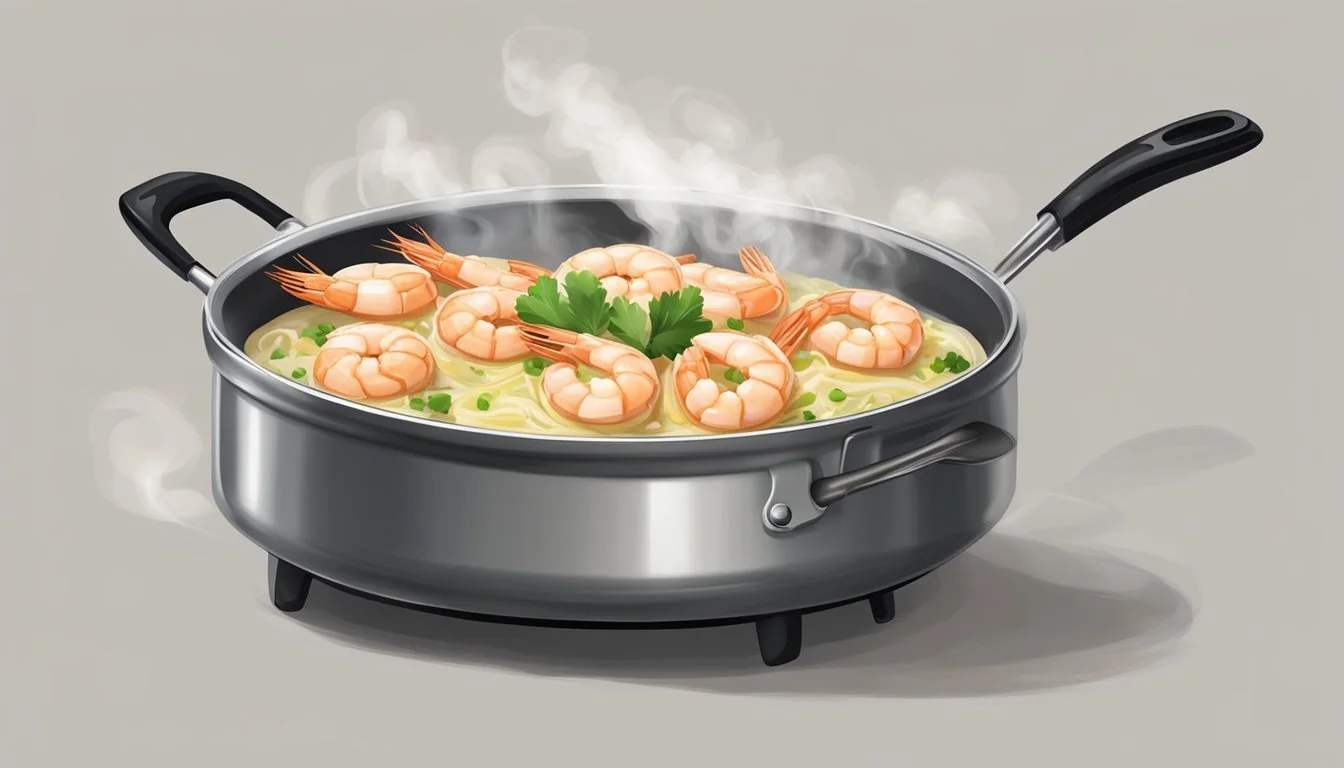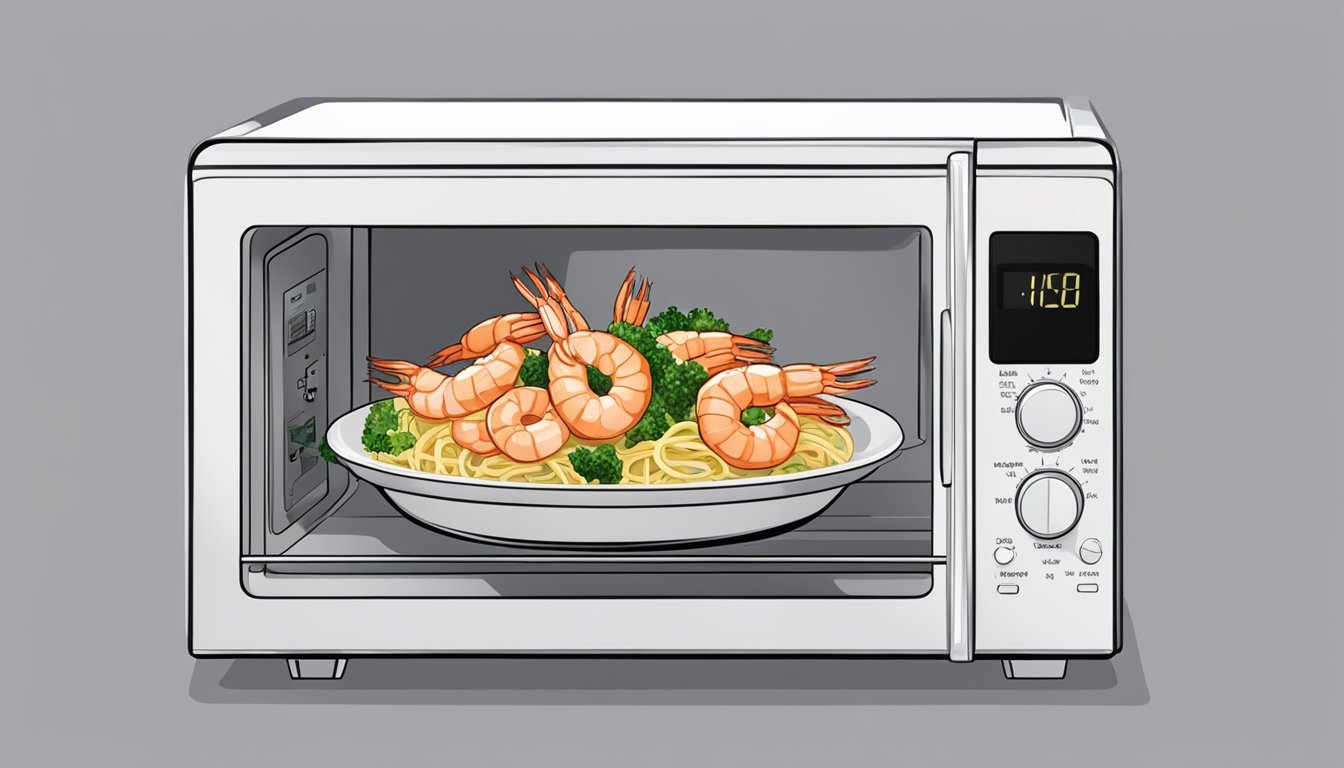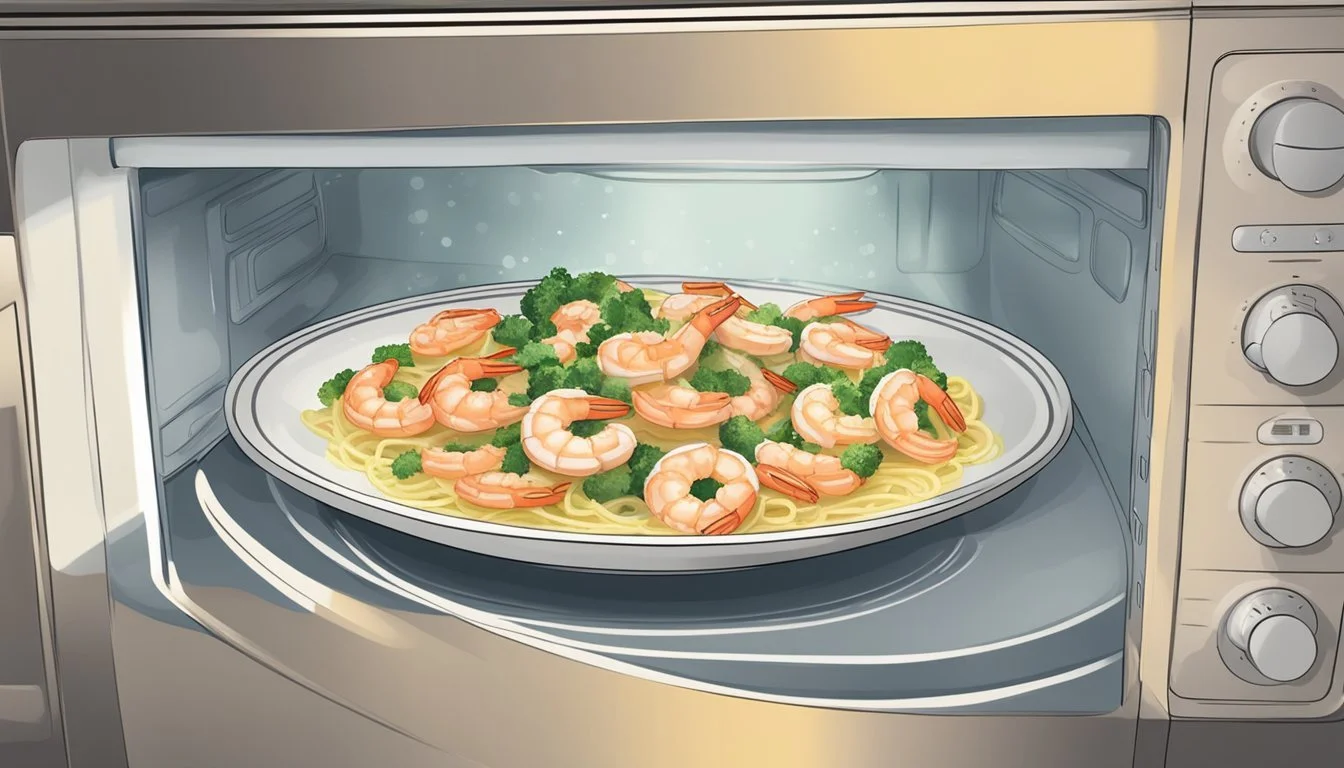Best Way to Reheat Shrimp Scampi
Ensuring Tender, Perfectly Warmed Shrimp
When it comes to enjoying leftover shrimp scampi (What wine goes well with shrimp?i?), the key lies in reheating it properly to preserve the delicate texture and flavor of the shrimp. Shrimp scampi is a beloved seafood dish known for its buttery garlic sauce and succulent shrimp. Reheating this dish while maintaining its original quality challenges home cooks to use techniques that prevent the shrimp from overcooking and becoming rubbery.
The ideal reheating method involves a gentle heat source that warms the shrimp evenly without causing them to lose their juiciness. Since shrimp can easily become tough when exposed to high heat for too long, a controlled approach ensures that the shrimp scampi retains its luxurious taste and texture. Whether one prefers using an oven, microwave, or stove, there are reliable strategies that can help achieve the best results.
Understanding Shrimp Scampi
Shrimp Scampi combines simple, yet flavorful ingredients to create a classic seafood dish. It is crucial to find a balance between reheating effectively and preserving the delicate texture of the shrimp.
Components of Shrimp Scampi
Shrimp Scampi is traditionally made with the following key ingredients:
Shrimp: The star of the dish, usually sautéed until just pink.
Garlic: Finely chopped or minced, garlic adds an aromatic base flavor.
Butter and Olive Oil: They provide richness and are often used together to sauté the shrimp and garlic.
Lemon: Fresh lemon juice brings a bright acidity that balances the dish.
White Wine: Often used to deglaze the pan and add depth of flavor.
Each component plays a significant role in Shrimp Scampi's overall taste and should be handled with care during reheating to maintain their distinct qualities.
Risks of Overcooking Shrimp
When reheating Shrimp Scampi, the primary risk is overcooking the shrimp, leading to an undesirable texture. Here are specific risks associated with overcooking:
Texture: Shrimp can quickly become rubbery and tough.
Flavor: Overcooked shrimp can lose their delicate seafood flavor, overshadowed by a chewiness.
Moisture: Excessive heat can cause the shrimp to lose moisture, drying out the dish.
By understanding the components of Shrimp Scampi and the risks of overcooking shrimp, one can reheat the dish while maintaining its quality and flavor.
Preparation for Reheating
Proper preparation is crucial when reheating shrimp scampi to maintain its quality and prevent overcooking. Attention to thawing and temperature equalization lays the foundation for successful reheating.
Thawing Frozen Shrimp Scampi
If the shrimp scampi is frozen, it must first be safely defrosted. This can be achieved by transferring the dish from the freezer to the refrigerator and letting it thaw slowly, typically overnight. For a quicker method, one may place the shrimp scampi in a sealed plastic bag and immerse it in cold water, changing the water every 30 minutes to ensure consistent defrosting.
Bringing to Room Temperature
Before reheating, it's advisable to bring the shrimp scampi to room temperature. This step reduces the reheating time and promotes even warming throughout the dish. It typically takes about 15-30 minutes for the shrimp scampi to reach room temperature after being removed from the refrigerator. One should ensure that the dish does not sit out for longer than necessary to avoid bacterial growth.
Reheating Techniques
Reheating shrimp scampi requires careful attention to avoid overcooking. The shrimp should be warmed through to just the right temperature without drying out or becoming rubbery. Here are three effective methods—each provides a reliable way to bring shrimp scampi back to its flavorful best while preserving texture.
Oven Reheating
To reheat shrimp scampi in an oven, start by preheating the oven to 350°F. Arrange the shrimp in a single layer on a baking sheet. To ensure even heating and retain moisture, cover the shrimp with foil. Heat the shrimp for 10-15 minutes. Check periodically to prevent overcooking.
Stovetop Reheating
For stovetop reheating, one should utilize a skillet on medium heat. Spread a thin layer of cooking oil or butter in the skillet to prevent sticking and add flavor. Place the shrimp scampi in the pan and heat gently, stirring occasionally, until thoroughly warmed. This process typically takes about 3-5 minutes.
Microwave Reheating
When using a microwave, place the shrimp scampi in a microwave-safe dish and cover with a microwave-safe lid or cling wrap. This containment helps the shrimp to heat evenly and retain moisture. Set the microwave on medium power and heat the shrimp for 1-2 minutes. It's important to watch closely to prevent the shrimp from becoming tough.
Preventing Moisture Loss
When reheating shrimp scampi, maintaining the shrimp's juiciness is crucial. Proper techniques can prevent loss of moisture, ensuring the dish remains flavorful.
Using Liquids
A small amount of liquid is beneficial in maintaining the moisture levels of shrimp scampi during reheating. Adding a tablespoon of water, broth, or wine to the dish before heating creates steam, which helps to keep the shrimp from drying out. One should distribute the liquid evenly across the shrimp to promote uniform steam production.
Add Liquid: 1 tbsp of water/broth/wine
Distribution: Evenly over the shrimp
Purpose: To generate steam and retain moisture
Covering the Dish
Covering the shrimp scampi is another effective strategy to lock in moisture. Whether one uses an oven or a microwave, sealing the dish with a lid or a layer of aluminum foil prevents the escape of steam, keeping the shrimp moist and tender.
For Oven: Cover with foil before placing in the oven
For Microwave: Use a microwave-safe lid or cling wrap
Result: Steam is trapped, ensuring moist and juicy shrimp
Safety and Storage
When reheating shrimp scampi, it's crucial to handle and store the dish properly to ensure food safety and maintain quality. The following guidelines provide specific measures for refrigerating and freezing shrimp scampi.
Refrigeration Guidelines
Shrimp scampi should be stored in an airtight container in the refrigerator to minimize the risk of bacterial growth. One should:
Place the shrimp scampi in the fridge within 2 hours of cooking to keep it safe.
Keep the shrimp scampi at a steady temperature of 40°F or below to ensure it remains safe for consumption.
Consume refrigerated shrimp scampi within 3 days, as quality diminishes over time.
Freezing and Defrosting
To extend the shelf life of shrimp scampi, one can freeze it, but they must adhere to proper freezing and defrosting techniques:
Cool the scampi completely before transferring it to a freezer bag or an airtight container. Remove as much air as possible to prevent freezer burn.
Label the container with the date and use the shrimp scampi within 3 months for optimal quality.
Thaw frozen shrimp scampi in the refrigerator overnight. One should never leave it out at room temperature, as this encourages bacterial growth.
Once defrosted, reheat the shrimp scampi only once; further cooling and reheating can compromise both safety and quality.
Timing and Temperature
In reheating shrimp scampi, one should pay close attention to both timing and temperature to ensure shrimp retains its texture without becoming rubbery. The goal is to warm the shrimp thoroughly while preventing overcooking, as shrimp can easily become tough and unpalatable.
Approximate Reheating Times
Oven: Preheat to 350°F and reheat for 10-15 minutes, covered with foil.
Microwave: Cover with a lid or cling wrap, and heat on medium power for 1-2 minutes.
Stovetop: On medium heat, add to skillet and warm for 2-3 minutes, stirring occasionally.
It's imperative to check the shrimp at short intervals to prevent overheating, which can quickly lead to texture degradation.
Internal Temperature Monitoring
When reheating, one needs to ensure that the shrimp reaches an internal temperature of 165°F, the temperature at which bacteria are destroyed, making the dish safe to consume. Use an instant-read food thermometer to check the temperature without prolonging the cooking process. This careful monitoring helps in serving a shrimp scampi that's heated to a safe consumption temperature while maintaining the desired succulent texture.
Serving Suggestions
When serving reheated shrimp scampi, the goal is to maximize flavor and freshness to ensure the dish tastes as good as if it were freshly made.
Enhancing Flavor After Reheating
One can brilliantly enhance the flavor of shrimp scampi after reheating by drizzling a bit of fresh lemon juice over the top. The citrus notes not only add a punch of flavor but also contribute a sense of freshness to the dish. If the scampi seems a little subdued, consider sautéing some finely chopped onions before reheating and mixing them in to add depth and sweetness to the taste profile.
Accompaniments
To complement the reheated shrimp scampi, consider the following accompaniments:
Pasta: A simple bed of al dente linguine or spaghetti provides a classic base that absorbs the scampi flavors beautifully.
Vegetables: Lightly steamed or sautéed vegetables like asparagus, broccoli, or zucchini add color, nutrition, and balance to the dish.
Bread: A slice of crusty artisan bread or garlic toast makes for an excellent tool to soak up any remaining scampi sauce.
Salad: A fresh green salad with a vinaigrette dressing can add a crisp and refreshing element to the meal.
By carefully choosing the right accompaniments, one ensures that the reheated shrimp scampi maintains its rightful place as the star of the meal.
Common Mistakes to Avoid
When reheating shrimp scampi, one seeks to retain the dish's succulence and flavor. Two common pitfalls that can ruin this delicate balance are overcooking, leading to rubbery shrimp, and excessive heat, causing dryness.
Avoiding Rubberiness
Overcooking is the primary culprit behind rubbery shrimp. One must be vigilant about the cooking time and temperature. Here are specific steps to prevent this texture issue:
Use Gentle Heat: Whether using an oven, microwave, or skillet, opt for a lower temperature than you might think necessary.
Limit Heating Time: Shrimp scampi usually needs just a few minutes to heat through. Test one shrimp before heating the entire batch to gauge timing accurately.
Sidestepping Dryness
To prevent shrimp from drying out, moisture is a friend. Consider these techniques to ensure reheated shrimp remains moist:
Add Water: Sprinkle a few spoonfuls of water over the shrimp before covering them with foil in the oven.
Cover Properly: Use a lid or cling wrap in the microwave, and if using a stove, maintain a lid over the skillet to trap steam.
By carefully managing the heat and moisture, one can reheat shrimp scampi to a tender, juicy state, avoiding rubbery, overcooked shrimp and sidestepping any unsavory dryness.
Additional Tips and Tricks
When reheating shrimp scampi, safeguarding the quality of the shrimp is paramount. The goal is to maintain the succulence of the shrimp while bringing the dish back to the appropriate temperature.
Single-Layer Reheating
For a uniform heating process, one should place the shrimp scampi in a single layer on the chosen reheating surface. This avoids overcrowding and helps in heating the shrimp evenly, preventing some from reheating too quickly while others remain cold. Using techniques such as covering with cling wrap when microwaving or foil in the oven can also help retain moisture.
Oven: Cover the dish with foil; reheat at a lower temperature, such as 300 °F, to avoid overcooking.
Microwave: Place in a single layer, cover with cling wrap, and use a lower power setting for brief intervals, checking frequently.
Reheating Different Shrimp Dishes
Different shrimp dishes require tailored reheating methods to preserve the intended texture and taste.
Shrimp Alfredo: Gently warm on the stovetop, stirring frequently to prevent the sauce from separating.
Shrimp Salad: Avoid reheating as it's best served cold. If containing cooked shrimp, gently reheat the shrimp separately before adding them back to the salad.
Dishes with Breading: Reheat in the oven or in a skillet to maintain the crispiness of the breading, being cautious not to burn or overcook the shrimp beneath.
By using these specific measures, one ensures that leftovers, regardless of the shrimp dish, retain their original appeal and taste.






